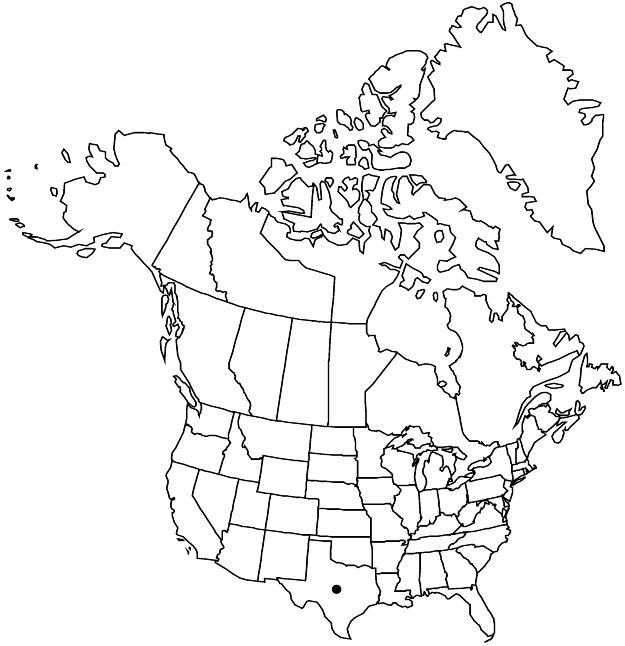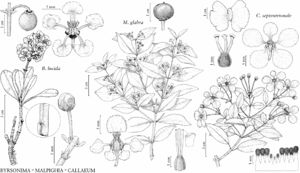Callaeum septentrionale
Syst. Bot. 11: 343. 1986.
Leaf blades lanceolate to elliptic-ovate, larger blades 20–70(–95) × 6–40 mm, base cuneate to rounded, apex acute or acuminate, abaxial surface tomentose or sparsely sericeous to glabrate, adaxial surface glabrous, bearing 1–3 small glands on each side near petiole apex or blade margin. Pedicels 6–24 mm, 1.8–5 times as long as peduncles. Samaras orbiculate or butterfly-shaped, lateral wings 10–42(–55) × 16–21 mm, dorsal wing 10–17 × 6 mm. 2n = 20 (Mexico).
Phenology: Flowering year-round, most commonly May–Sep; fruiting Jun–Oct.
Habitat: Brushy woodlands.
Elevation: 100–200 m.
Distribution

Tex., e Mexico.
Discussion
Callaeum septentrionale is distinctive in the flora area, being the only native species of Malpighiaceae with hairy petals and orbiculate or butterfly-shaped samaras with dominant lateral wings. The posterior three anthers are smaller than the anterior seven, and the stigma, borne on the internal angle of the style, is oblate (wider than high). The species has the ability to climb, but when growing without support it can be shrubby, with the branches then often trailing. Callaeum septentrionale is known in the flora area only from south of Laredo, but it is to be sought in southern Texas near the Mexican states of Nuevo León and Tamaulipas. It is sometimes cultivated as an ornamental in southern Arizona and southern California; C. macropterum (de Candolle) D. M. Johnson is also cultivated in southern Arizona. There is no evidence that either species has become naturalized in either state.
Selected References
None.
